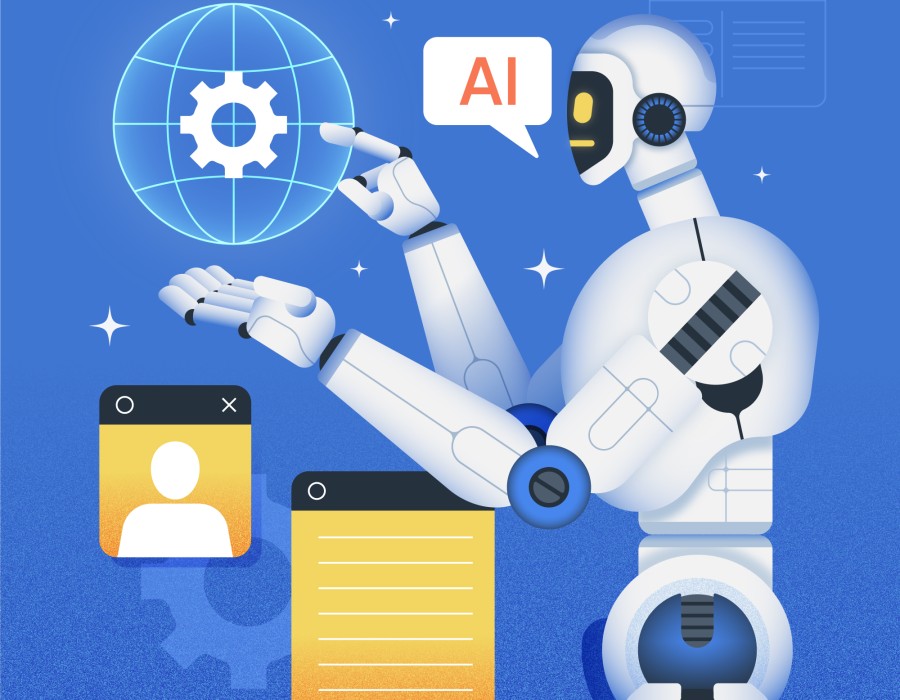The digital content landscape is undergoing a seismic transformation. For decades, content creation focused on capturing human attention—through emotional storytelling, visual design, and persuasive language. But the next audience for your content won’t be human at all. It will be AI agents—digital assistants and autonomous systems that read, interpret, and act on information on behalf of their human owners.
As these intelligent agents increasingly drive product discovery, comparison, and purchasing, the rules of engagement are changing. Brands that continue writing only for people risk becoming invisible to the systems deciding what people see. The future of marketing now depends on content designed for machine consumption—where clarity, structure, and accuracy matter more than creative flair.
From Human-Centric to Machine-Readable Content
Traditional content speaks to emotions: curiosity, desire, trust. AI agents, however, don’t experience emotions—they interpret logic. They analyze information semantically, assessing relevance, accuracy, and authority before recommending anything to a human.
This means your content must shift from persuasion-based to data-based communication. An AI agent scanning thousands of options won’t respond to slogans like “Best quality in the market!” but will prioritize entries that state measurable, verifiable facts—“ISO-certified, 95% customer satisfaction rating, 24-month warranty.”
To ensure your content is discoverable and understandable by machines, you must make it structured, standardized, and semantically rich. This includes:
- Using schema markup (structured data formats recognized by search engines).
- Maintaining consistent product data across platforms and APIs.
- Writing with precise terminology rather than figurative or promotional language.
The Role of Structured Data
At the heart of AI-agent compatibility lies structured data—information organized in a way machines can easily process. Search engines, digital assistants, and autonomous agents rely on this data to make sense of the web.
Structured data uses standardized formats like JSON-LD or schema.org markup to describe key elements such as product names, prices, ratings, specifications, and reviews. For example, instead of embedding a product description in long paragraphs, brands should use tags and fields that define each attribute clearly.
This approach doesn’t eliminate creativity—it enhances accessibility. You can still write compelling stories and emotional copy for human readers while embedding structured layers beneath for machine interpretation.
Transparency and Verifiable Accuracy
In an agent-driven ecosystem, trust is algorithmic. AI systems prioritize content that’s factual, transparent, and verifiable. They evaluate data consistency across multiple sources—your website, social listings, and review platforms. Any discrepancies in pricing, claims, or availability can downgrade your visibility.
To build credibility with AI systems:
- Keep product data synchronized across all touchpoints.
- Include authentic customer reviews and verifiable ratings.
- Cite credible sources or certifications wherever relevant.
- Avoid exaggerated or subjective claims.
Remember, AI agents are designed to protect human users from misinformation and manipulation. Brands that communicate clearly, honestly, and consistently will gain algorithmic trust—and, in turn, reach more consumers through machine recommendations.
Writing for Machine Logic and Human Emotion
While AI agents filter, rank, and recommend content, the final consumer remains human. Therefore, effective modern content must strike a dual balance—it must satisfy the logic of machines while resonating emotionally with humans.
This can be achieved by:
- Structuring key data (for machines) while crafting engaging narratives (for humans).
- Using bullet points, comparison tables, and key highlights for easy AI parsing.
- Embedding FAQs, summaries, and metadata that enhance comprehension for both audiences.
Think of your content as bilingual—one language for algorithms, another for people.
The Future: Agent-First Content Strategy
As AI assistants like ChatGPT, Siri, Alexa, and Google Gemini evolve into full-fledged autonomous purchasing agents, they’ll control an increasing share of digital transactions. Brands that fail to prepare for this shift risk being bypassed entirely.
The emerging discipline—Agent Optimization (AO)—is the natural evolution of SEO. It focuses not on ranking for keywords but on structuring knowledge for algorithmic understanding. Your content will need to be machine-indexable, factual, and ethically transparent to remain visible in this new ecosystem.
Conclusion
The rise of AI agents doesn’t mean the end of storytelling—it means the start of intelligent storytelling. Businesses that blend emotion with data, creativity with structure, and authenticity with transparency will thrive.
In the near future, your website won’t just attract human readers; it will communicate with thousands of AI agents making decisions for them. Those who adapt their content today will lead tomorrow’s marketplace—because in the age of intelligent commerce, your content must speak fluently to both people and machines.
Tags: AIagents, AImarketingagents, agenticAI, llm, generativeai





Comments